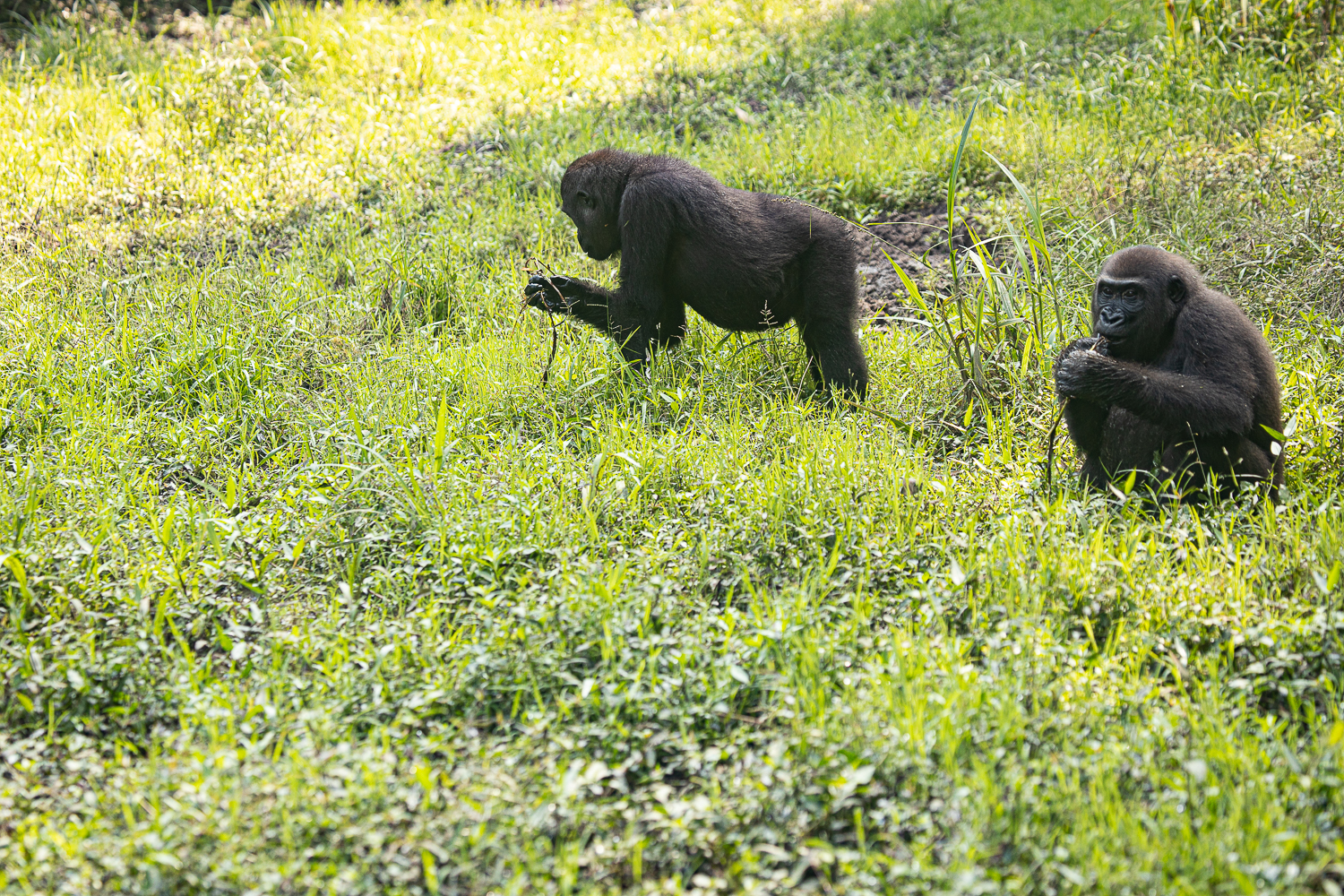First of all, because in their first two years of life, the young gorillas mainly cling to their mother’s back – a posture that reveals absolutely nothing. When the offspring then starts to climb and romp around, you not only need an infinite amount of patience, but also great luck to catch a revealing glimpse through the binoculars. Nevertheless, you can’t be completely sure at a distance.
Only a genetic analysis can bring clarity, but this requires some effort.
Shelly Masi from the French State Natural History Museum, who has been researching in Dzanga-Sangha for many years, and her team collected samples from several young animals from the three habituated gorilla groups last year. They brought them to Paris for analysis and – big surprise! –

Who cares – as long as there is offspring!
But no matter the sex – most importantly we do have offspring, because for us every gorilla is a gift and a sign of hope!
The youngest is currently Bokonya, born on 6 September 2021 in the Mayele group.
The BaAka trackers chose the name, after the tree under which they found the newborn in the arms of its mother Duma – fortunately the name fits both sexes. In the meantime, Bokonya shows a lot of interest in its big sister Kenga. She sometimes sits next to it when the little one is fed by its mother, and then Bokonya strokes her head. So Bokonya has the best prospects of growing up sheltered – also thanks to your sponsorship.
More News
Deciphering the Secret Language of Forest Elephants
Elephants don't just trumpet loudly. Much more often they communicate through a low-frequency rumble, which we humans often do not hear, but can sometimes feel.
Successful rescue in Dzanga-Sangha
DSPA ecoguards helped to rescue a BaAka girl who had been kidnapped near Bayanga, the main village in Dzanga-Sangha, in late January 2021.
African elephant under pressure
African elephant species now Endangered and Critically Endangered - IUCN Red List
Why our work is important
CAR ranks among the top 10 countries in the world in wildlife conservation